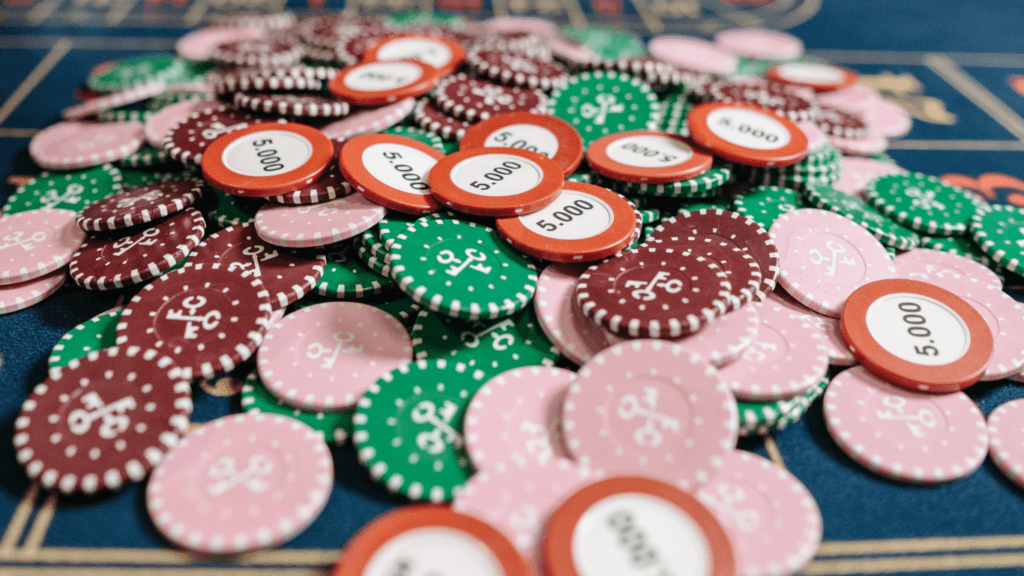Ever wondered how top poker players seem to know their opponents’ next moves before they even make them? In the world of strategic card games, mastering hand reading techniques can give you a competitive edge like no other.
By honing the skill of interpreting subtle cues and behaviors, you can unravel the mysteries hidden in your opponent’s hands. In this article, I’ll delve into the art of hand reading and share valuable insights on how to predict your opponent’s moves with precision.
From understanding betting patterns to deciphering body language, these techniques can elevate your gameplay to new heights. Get ready to unlock the secrets behind strategic decision-making at the card table through the power of hand reading.
Understanding Hand Reading Techniques
Exploring hand reading techniques in poker reveals how seasoned players can anticipate their opponents’ actions. Mastering these skills involves interpreting subtle cues and behaviors to gain a strategic edge during gameplay.
By understanding betting patterns and body language, players can make informed decisions at the table.
Importance of Predicting Your Opponent’s Moves
Understanding the importance of predicting your opponent’s moves in poker is crucial for strategic gameplay. Observing and interpreting subtle cues and behaviors can give invaluable insights into the hand your opponent is holding.
By mastering hand reading techniques, I can anticipate their actions more accurately, leading to better decision-making at the table. Analyzing betting patterns is a key aspect of predicting opponents’ moves.
It allows me to decipher the strength of their hand based on their betting behavior, helping me adjust my own strategy accordingly. Additionally, interpreting body language provides further clues to their intentions, empowering me to make informed decisions during gameplay.
By honing my hand reading skills, I gain a competitive edge over my opponents. Seasoned players leverage these techniques to analyze the information available and make calculated moves that increase their chances of success.
Mastering the art of predicting opponents’ moves enhances my strategic prowess and elevates my overall performance at the poker table.
Common Strategies for Hand Reading
Observation and Analysis
Observing and analyzing opponents’ behaviors during a poker game is crucial for effective hand reading. It’s essential to pay attention to how players react in different situations, such as when they check, bet, or raise.
By consistently observing these actions, I can start to build a profile of each player at the table. This unique profile helps me anticipate their moves based on their past behavior patterns.
Player Behavior Patterns
- Recognizing Patterns: Identifying player behavior patterns is essential for effective hand reading in poker. By observing how opponents act in different scenarios, I can discern their tendencies, such as frequent bluffing with weak hands or aggression with strong holdings.
-
Informed Decision-Making: Understanding these gameplay patterns enables me to make more informed decisions, giving me a strategic advantage in predicting opponents’ moves during the game.
Implementing Hand Reading Techniques in Poker
As I implement hand reading techniques in poker, it’s essential to focus on observing and analyzing subtle cues to predict my opponents’ moves accurately. By mastering the skill of interpreting betting patterns and body language, I can greatly enhance my strategic decision-making during gameplay.
When implementing hand reading techniques, I pay close attention to my opponents’ betting patterns. Understanding how they bet in different situations provides valuable insights into the strength of their hands. By analyzing these patterns, I can adjust my strategies accordingly to outplay my opponents.
Moreover, interpreting body language cues is another crucial aspect of effective hand reading. By observing my opponents’ gestures, facial expressions, and overall demeanor, I can uncover additional hints about their intentions and the cards they may be holding. This skill allows me to make more informed decisions at the poker table.
In implementing hand reading techniques, I also focus on common strategies such as observing how players react in specific scenarios. Whether they are checking, betting, or raising, each action reveals important information that contributes to building a profile of their playing style. Recognizing patterns in their behavior, such as bluffing tendencies or aggressive betting with strong hands, empowers me to anticipate their moves and make strategic decisions that give me a competitive edge in the game.



 Margarita Ventura
Senior Sports Betting Analyst
Margarita Ventura is a seasoned sports betting analyst with an impressive track record of success in the field. Known for her sharp analytical mind and meticulous attention to detail, Margarita combines her deep knowledge of sports with advanced statistical techniques to provide readers with reliable, data-backed betting strategies. Her background in sports psychology and analytics allows her to decode trends and offer unique perspectives on betting odds, player performance, and game outcomes. Margarita’s articles have become essential reading for anyone interested in maximizing their sports betting outcomes. At Pro Gamble Genius, she is dedicated to helping readers make educated bets, whether they're new to sports betting or seasoned pros. Margarita’s insights not only enhance readers' understanding of sports betting but also empower them to make confident, calculated wagers.
Margarita Ventura
Senior Sports Betting Analyst
Margarita Ventura is a seasoned sports betting analyst with an impressive track record of success in the field. Known for her sharp analytical mind and meticulous attention to detail, Margarita combines her deep knowledge of sports with advanced statistical techniques to provide readers with reliable, data-backed betting strategies. Her background in sports psychology and analytics allows her to decode trends and offer unique perspectives on betting odds, player performance, and game outcomes. Margarita’s articles have become essential reading for anyone interested in maximizing their sports betting outcomes. At Pro Gamble Genius, she is dedicated to helping readers make educated bets, whether they're new to sports betting or seasoned pros. Margarita’s insights not only enhance readers' understanding of sports betting but also empower them to make confident, calculated wagers.
